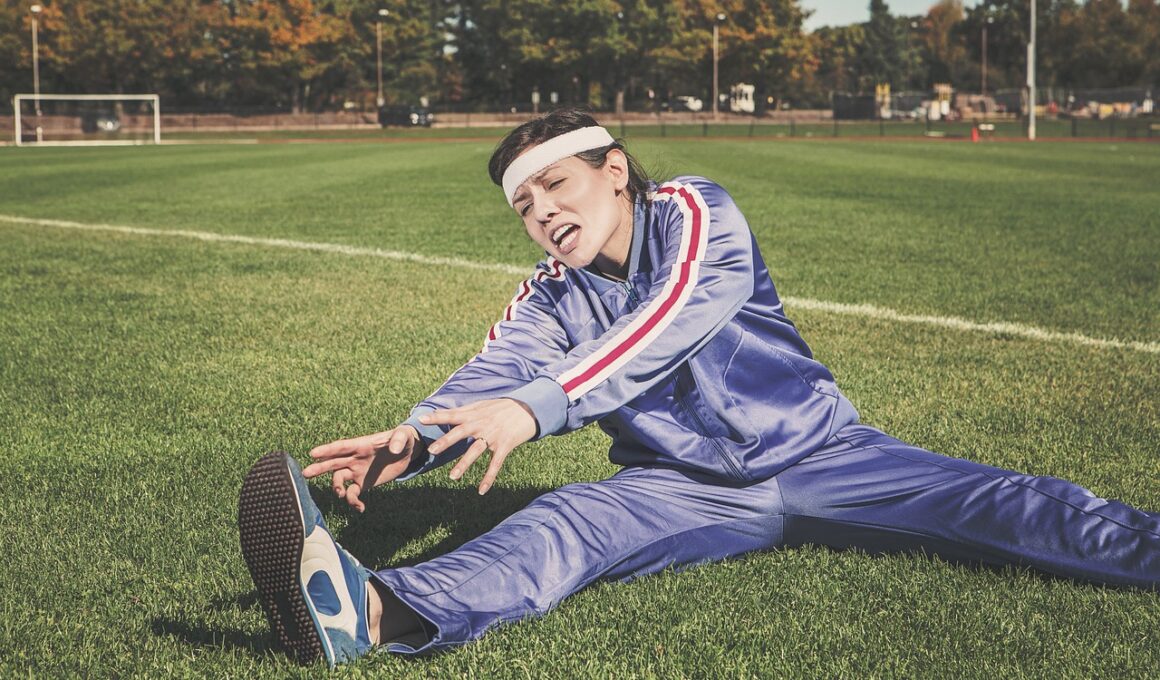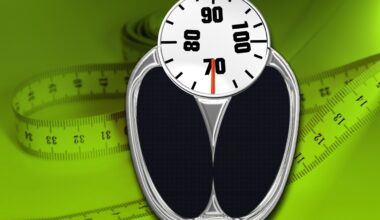Neuromuscular Responses to Plyometric Training
Plyometric training is an essential component in enhancing athletic performance, particularly among competitive athletes. This type of training focuses on the explosive contractions of muscles, resulting in significant neuromuscular adaptations. The effectiveness of plyometric exercises is attributed to the stretch-shortening cycle, where muscles undergo an eccentric contraction followed by a rapid concentric contraction. In athletes, this cycle enhances their power output and agility, translating into improved performance in their respective sports. Furthermore, plyometric training increases muscular strength and promotes the efficient recruitment of motor units, leading to optimized movement patterns. Athletes who consistently engage in plyometric training exhibit improved reactive strength and overall performance. The training encourages the development of both fast-twitch and slow-twitch muscle fibers, enhancing both strength and endurance. Successful implementation of plyometric training necessitates a strategic approach, considering the unique needs and skill levels of each athlete. Coaches and trainers must carefully structure plyometric workouts to maximize effectiveness while minimizing the risk of injury. Integrating plyometric exercises into a comprehensive training program can yield substantial benefits for athletes aiming to excel in their sports.
Plyometric training encompasses various exercise modalities such as box jumps, depth jumps, and hurdle hops, each focusing on explosive power. These exercises engage the neuromuscular system intensely, leading to adaptations that improve an athlete’s explosive strength and speed. The flexibility of plyometric training is evident in its ability to be tailored to specific sports or physical demands, allowing for targeted improvements. For instance, sprinters may focus on explosive sprint starts, while basketball players can prioritize vertical jump skills. Research supports the assertion that athletes participating in consistent plyometric training demonstrate significant improvements in their vertical jump height and sprinting speed. Moreover, plyometric exercises can enhance proprioception and balance, which are crucial for maintaining stability during dynamic movements. The application of neurological principles ensures that these exercises train the brain to communicate effectively with muscles. Coaches must monitor the volume and intensity of plyometric workouts to prevent overtraining and ensure optimal recovery. Effective plyometric training programs incorporate a variety of exercises that not only build strength but also refine coordination and speed, aiding athletes in achieving their performance goals.
The Mechanisms Behind Neuromuscular Adaptations
Understanding the mechanics behind neuromuscular adaptations to plyometric training can illuminate how athletes benefit from these exercises. Plyometric training activates the stretch reflex, enhancing the neuromuscular system’s efficiency. This reflex stimulates the muscles for swift reactions, significantly contributing to improvements in athletic performance. The result is a notable neuromuscular response characterized by increased force production during explosive movements. Research indicates that repeated engagement in plyometric training can lead to adaptations in the nervous system, including an enhanced rate of force development and improved muscle activation patterns. This improvement allows athletes to execute movements with greater speed and efficiency, critical for superior performance in sports. Furthermore, plyometric training promotes increases in muscle stiffness, which paradoxically may enhance force transmission during powerful movements. Understanding the neuromuscular adaptations resulting from plyometric training explains why athletes experience significant gains in strength, speed, and agility. Coaches need to emphasize proper technique while ensuring that athletes maintain sound mechanics during plyometric exercises to maximize benefits and reduce injury risk. The combination of proper guidance and strategic training can lead to profound performance outcomes.
Incorporating plyometric training into an athlete’s routine needs careful consideration of individual experience levels and physical capabilities. Beginners should start with low-intensity exercises, emphasizing mastery of technique before progressing to more complex drills. The primary focus during initial training should be on developing a strong foundation in strength and stability, which can prevent injuries that may arise from improper execution. Athletes with prior experience can introduce higher intensity and complexity in plyometric training, shaping their workouts around specific goals related to performance. It is essential for trainers to evaluate the needs, strengths, and weaknesses of each athlete regularly. Furthermore, recovery strategies must also be emphasized in plyometric training regimens since these high-impact exercises can impose significant stress on an athlete’s body. Adequate rest, hydration, and nutrition must accompany plyometric training to facilitate recovery and maximize gains. Monitoring athlete feedback is vital for adjusting training loads and ensuring that they are progressing safely. By individualizing plyometric training programs while maintaining an emphasis on recovery, athletes can achieve peak performance and sustain their competitive edge.
Measuring the Outcomes of Plyometric Training
Evaluating the outcomes of plyometric training is essential for determining its effectiveness in enhancing athletic performance. Coaches and trainers can utilize various methods, such as performance testing and biomechanical analysis, to assess improvements in athletes. Common metrics include vertical jump height, sprint times, and agility tests, which provide insights into the efficacy of training interventions. Additionally, subjective measures gathered from athlete feedback can help gauge perceived benefits, motivation, and readiness for competitions. Using a blend of objective and subjective data helps build a comprehensive understanding of the training impact. Research shows that athletes involved in structured plyometric programs exhibit notable improvements in these performance metrics, indicating successful training adaptations. Tracking progress must be consistent throughout the training cycle to ensure athletes stay on track toward their performance aspirations. Visualizing and analyzing data allows trainers to make informed decisions about future training modifications. Athletes should remain informed of their progress, which can boost motivation and enhance commitment to the training program. By thoroughly measuring outcomes, stakeholders can validate the efficacy of plyometric training as a powerful tool for athletic excellence.
In addition to performance metrics, biomechanical analysis plays a crucial role in understanding the specific movements and kinetics involved in plyometric training. Tools such as force plates and motion capture systems offer valuable insights into an athlete’s movement mechanics during plyometric exercises. By examining factors such as ground reaction forces and jump heights, trainers can identify areas for improvement in technique and performance. Alterations in how athletes perform jumps can inform programming decisions and maximize training effectiveness. Furthermore, understanding biomechanical responses may uncover potential injury risks, allowing coaches to intervene proactively. Comprehensive evaluations of athlete performance through biomechanical analytics shed light on the neuromuscular adaptations occurring throughout plyometric training. This knowledge can enhance the design of individualized training programs aimed at optimizing athletic performance while reducing the risk of injury associated with high-impact activities. Regular assessments combined with biomechanical insights create a feedback loop that informs ongoing training strategies. This proactive approach can elevate athletes’ performance and promote longevity in their sporting endeavors, ultimately contributing to their success.
Conclusion: The Importance of Plyometric Training
Plyometric training emerges as an indispensable component for athletes seeking to enhance their performance across various sports. The neuromuscular adaptations that occur from engaging in plyometric exercises equip athletes with the necessary tools to excel in physically demanding environments. From improved speed, power, and agility to refined movement patterns, the benefits are far-reaching. However, athletes and coaches must approach plyometric training with a clear strategy focused on individual capabilities and recovery needs. Ensuring proper technique during execution and regular assessments of progression is critical in achieving desired outcomes while minimizing injury risks. As research continues to evolve, the application of plyometric training in sports performance will likely become more sophisticated. Future studies may uncover additional dimensions of neuromuscular benefits derived from plyometric training, enhancing its credibility in athletic development. By embracing plyometric training, athletes can harness their full potential, making a significant impact on their overall athletic performance. As the field progresses, ongoing education and adaptation of training methods will remain essential for fostering elite athletes capable of excelling at the highest levels.
Plyometric training can also significantly influence athlete psychology, contributing to better mental resilience and confidence in performance situations. Engaging in challenging plyometric exercises fosters a growth mindset, supporting athletes in embracing difficulties as opportunities for improvement. This psychological aspect, coupled with the physical benefits, enhances an athlete’s overall repertoire, establishing a holistic approach to training. With systematic implementation, plyometric training can transform an athlete’s movement capabilities and mental preparedness, enabling them to overcome common performance hurdles. The significance of including plyometric training in a well-rounded athletic program makes it a pivotal subject deserving attention among coaches and trainers alike. Understanding the profound effects of these exercises can lead to optimized training outcomes and greater overall success for athletes.


